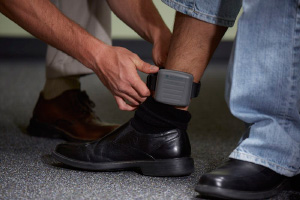Comparative Study and Evaluation of SCRAM Use, Recidivism Rates, and Characteristics
 In 2010, the National Highway Traffic Safety Administration (NHTSA) began a study to look more in-depth at the impact of SCRAM Continuous Alcohol Monitoring® (SCRAM CAM™) on DUI offender recidivism. The study focused on two jurisdictions in Wisconsin and Nebraska, and study participants were those with offenses occurring between 2007 and 2009.
In 2010, the National Highway Traffic Safety Administration (NHTSA) began a study to look more in-depth at the impact of SCRAM Continuous Alcohol Monitoring® (SCRAM CAM™) on DUI offender recidivism. The study focused on two jurisdictions in Wisconsin and Nebraska, and study participants were those with offenses occurring between 2007 and 2009.
The study looked at recidivism two years post-monitoring. In April of 2015, NHTSA released the results in Comparative Study and Evaluation of SCRAM Use, Recidivism Rates, and Characteristics.
Below is a review of the key findings from the study. Overall, the results showed a direct correlation between SCRAM monitoring and behavior change. NHTSA also identified some limitations within the study design and recommended further study to truly isolate the impact of just CAM on behavior, versus CAM combined with a variety of other program parameters and requirements.
Key Findings
- Recidivists assigned to CAM took an average of 107 more days to recidivate than non-CAM recidivists (WI: 360 days for CAM, 271 days for non-CAM; NE: 458 days for CAM, 333 days for non-CAM).
- Being assigned to CAM delayed recidivism by 36% in WI and 43% in NE (among those who did recidivate).
- Less than 2% (WI: 14 out of 837; NE: 1 out of 672) of CAM users recidivated while on the device.
- Assignment to CAM for at least 90 days was associated with a 113% decreased risk of recidivism (NE only)
- Those results are consistent with a preliminary study published by the National Center for State Courts in 2009 and the National Drug Court Institute in 2010 showing that the longer on CAM, the lower the rate of recidivism. (Flango and Cheesman)
- The overall rates of recidivism were higher among CAM users than non-CAM users (WI: 7.6% for CAM, 6.2% for non-CAM; NE: 9.8% for CAM, 7.7% for non-CAM). NHTSA determined neither of these were statistically significant.
